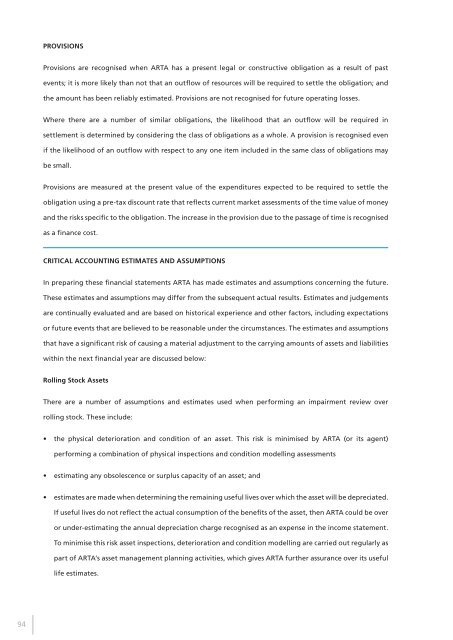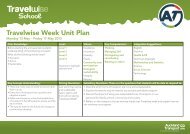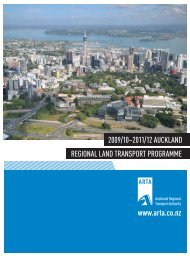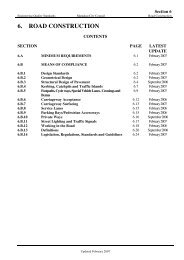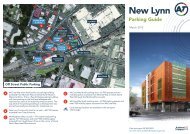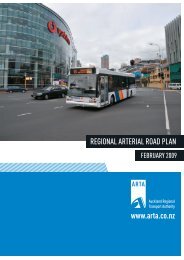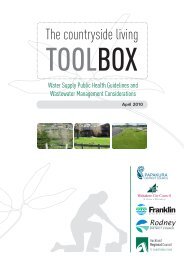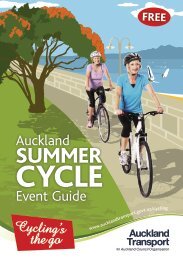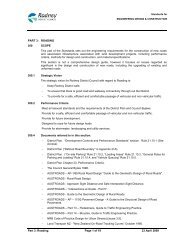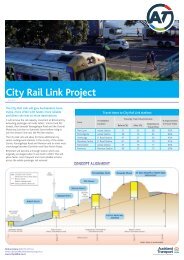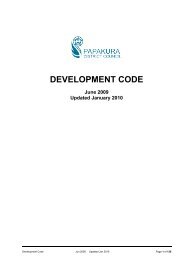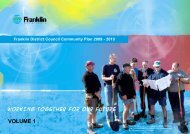ARTA Annual Report 2009 - Auckland Transport
ARTA Annual Report 2009 - Auckland Transport
ARTA Annual Report 2009 - Auckland Transport
You also want an ePaper? Increase the reach of your titles
YUMPU automatically turns print PDFs into web optimized ePapers that Google loves.
Provisions<br />
Provisions are recognised when <strong>ARTA</strong> has a present legal or constructive obligation as a result of past<br />
events; it is more likely than not that an outflow of resources will be required to settle the obligation; and<br />
the amount has been reliably estimated. Provisions are not recognised for future operating losses.<br />
Where there are a number of similar obligations, the likelihood that an outflow will be required in<br />
settlement is determined by considering the class of obligations as a whole. A provision is recognised even<br />
if the likelihood of an outflow with respect to any one item included in the same class of obligations may<br />
be small.<br />
Provisions are measured at the present value of the expenditures expected to be required to settle the<br />
obligation using a pre-tax discount rate that reflects current market assessments of the time value of money<br />
and the risks specific to the obligation. The increase in the provision due to the passage of time is recognised<br />
as a finance cost.<br />
Critical Accounting Estimates and Assumptions<br />
In preparing these financial statements <strong>ARTA</strong> has made estimates and assumptions concerning the future.<br />
These estimates and assumptions may differ from the subsequent actual results. Estimates and judgements<br />
are continually evaluated and are based on historical experience and other factors, including expectations<br />
or future events that are believed to be reasonable under the circumstances. The estimates and assumptions<br />
that have a significant risk of causing a material adjustment to the carrying amounts of assets and liabilities<br />
within the next financial year are discussed below:<br />
Rolling Stock Assets<br />
There are a number of assumptions and estimates used when performing an impairment review over<br />
rolling stock. These include:<br />
• the physical deterioration and condition of an asset. This risk is minimised by <strong>ARTA</strong> (or its agent)<br />
performing a combination of physical inspections and condition modelling assessments<br />
• estimating any obsolescence or surplus capacity of an asset; and<br />
• estimates are made when determining the remaining useful lives over which the asset will be depreciated.<br />
If useful lives do not reflect the actual consumption of the benefits of the asset, then <strong>ARTA</strong> could be over<br />
or under-estimating the annual depreciation charge recognised as an expense in the income statement.<br />
To minimise this risk asset inspections, deterioration and condition modelling are carried out regularly as<br />
part of <strong>ARTA</strong>’s asset management planning activities, which gives <strong>ARTA</strong> further assurance over its useful<br />
life estimates.<br />
94


